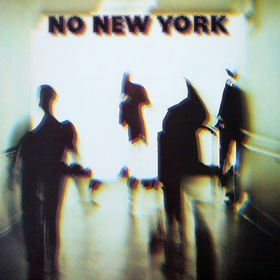No wave
No Wave was a short-lived but influential music and art scene that thrived briefly in New York City during the late 1970s and early 1980s alongside the Punk scene there. The term No Wave is in part satiric wordplay rejecting the commercial elements of the then-popular New Wave genre. The term also highlights the music's experimental nature: No Wave music belonged to no fixed style or genre.
Music
In many ways, No Wave is not a clearly definable musical genre with consistent features. Various groups drew on such disparate styles as funk, jazz, blues, and punk rock. There are, however, some elements common to most No Wave music, such as abrasive atonal sounds, repetitive driving rhythms, and a tendency to emphasize musical texture over melody. No wave Lyrics often focused on nihilism and confrontation.
Performance
No Wave is often better defined in terms of the artistic environment in which it thrived and the character of performances typical to its context. No Wave performances drew heavily on performance art and as a result were often both highly theatrical and minimalistic in their renditions.
Influence
No Wave had an important impact on noise and industrial bands who formed after, like Big Black, Lev Six, Swans, Helmet, and Live Skull. Sonic Youth emerged from this scene by creating music-as-art that eventually reached mass audiences and critical acclaim. Also for new bands like Liars, Ex Models, Neptune, Erase Errata the influence of the No Wave scene was important.
Dutch experimental luthier Yuri Landman has created several unique stringed instruments, extending the palette of available guitar sounds. One example is his Moodswinger, used by Aaron Hemphill of Liars.

The Brian Eno-"produced" [1] album No New York is perhaps the best example of this genre, featuring songs by Mars, Teenage Jesus & the Jerks, DNA and The Contortions.
Simon Reynolds, author of Rip It Up and Start Again : Postpunk 1978-1984 , wrote
- And although "affection" is possibly an odd word to use in reference to a bunch of nihilists, I do feel fond of the No Wave people. James Chance's music actually stands up really well, I think; there are great moments throughout Lydia Lunch's long discography, and Suicide's records are just beautiful. (Listen to James Chance & the Contortions, "Contort Yourself," 1979; and Suicide, "Touch Me," 1980.) [2]
Also during this time there was a period of No Wave Cinema which was an underground film movement in the East Village. No Wave filmmakers included Amos Poe, John Lurie, Vivienne Dick, Scott B and Beth B, and led to the Cinema of Transgression and work by Nick Zedd and Richard Kern.
Late outliers of this movement included groups such as Skeleton Key, Cop Shoot Cop, VPN and others.
List of No Wave artists
- 8-Eyed Spy
- Bush Tetras
- Come On
- The Contortions/James Chance
- Dark Day
- DNA
- Friction
- Futants
- Judy Nylon
- Lydia Lunch
- Mars
- Model Citizens
- Raybeats
- Red Transistor
- Rhys Chatham
- Sick Dick and the Volkswagens
- Sonic Youth
- The Static
- Suicide
- Teenage Jesus & the Jerks
- Theoretical Girls
- Ut
- Von Lmo
See also
- 3rd Bridge
- Blow 454
- Blurt
- Boredoms
- Glenn Branca
- Circle X
- Dark Day
- Dazzling Killmen
- Liars
- Ex Models
- Live Skull
- John Lurie and The Lounge Lizards
- Moodswinger
- Neutral Records
- No Wave Cinema
- Post Punk
- Post Hardcore
- Rat At Rat R
- ZE Records
- John Zorn
- !!!
- Scott Crary
- The Flying Luttenbachers